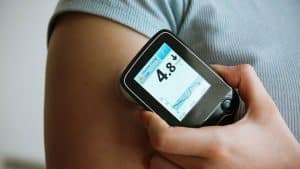We all talk about sitting less, readers! “Today” is always the day we’re going to start working out more and sitting less, but it doesn’t usually pan out that way, does it? There’s always something more important to do than exercise, and a lot of times, you just don’t feel it. It’s simply easier to stay seated.
However, moving does a lot of good things for your health, and it can even lower your blood sugar, that famous level that indicates your risk of diabetes.
A hallmark of diabetes is resistance to insulin and leptin. When this happens, your body becomes unable to “hear” the signals coming from these crucial energy-regulating hormones. Insulin resistance is also linked to a higher obesity risk, but keep in mind that being thin doesn’t guarantee health; around 12 percent of all people with diabetes are at a normal weight, according to Geisinger (https://www.geisinger.org/health-and-wellness/wellness-articles/2018/03/05/21/59/yes-thin-people-can-get-type-2-diabetes).
One of the primary risk factors for insulin resistance is actually inactivity, defined as been active for under 30 minutes a week. Many studies have highlighted that exercise is key for preventing type 2 diabetes and that sitting all the time is particularly risky for those with diabetes.
One study, published in the Diabetologia journal, discovered that diabetic people who took a ten-minute walk after every meal had greater blood sugar control than those who worked out 30 minutes once a day (https://link.springer.com/article/10.1007/s00125-016-4085-2). Participants who walked after eating saw their blood sugar levels post-meal drop by 22 percent. Another review of 28 studies published in the same journal found an inverse relationship between overall diabetes risk and exercise (https://link.springer.com/article/10.1007/s00125-016-4079-0). In general terms, this means the researchers found that the more you worked out, the lower your risk of developing type 2 diabetes. They also found that one of the ways this worked was that exercise lets your muscles use the sugar in your body more effectively.
If you’re not moving enough now, it’s time to start. If possible, take a short walk after meals. This can help lower blood sugar levels and also boosts digestion. Start up an exercise routine that you can stick to, and consult your doctor before you begin to ensure what you’re planning is safe and right for your current levels of fitness. As you work out more, you’ll be able to tweak your routine accordingly as your fitness levels improve.




